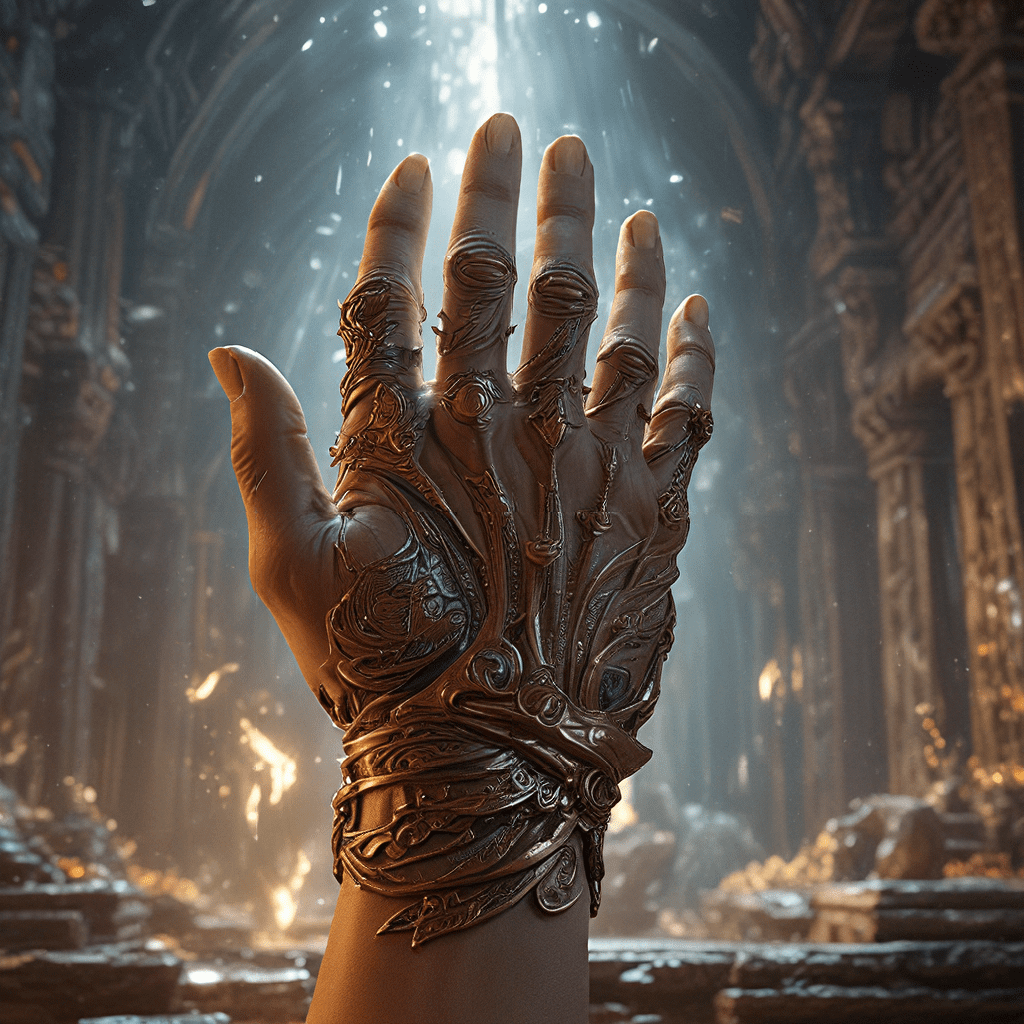The Divine Hand: Exploring the Creator’s Touch in the Egyptian Creation Myth
The ancient Egyptians, like many civilizations before them, sought to understand the mysteries of creation. Their mythology, rich with symbolism and divine figures, offers a fascinating glimpse into their world view. This article explores the Egyptian creation myth, focusing on the concept of the “Divine Hand,” the powerful and intricate role of the gods in shaping their universe, and the lasting impact of these beliefs on their daily lives.
1. Introduction: Setting the Stage for Creation
Ancient Egyptian mythology is a complex tapestry woven with tales of gods, goddesses, and the creation of the world. Like other creation myths across the globe, it sought to explain the origins of life, the universe, and humanity’s place within it. The Egyptian creation myth, in particular, highlights the concept of the “Divine Hand,” illustrating the active and direct involvement of the gods in shaping the universe and its inhabitants. Understanding the “Divine Hand” is crucial for grasping the essence of Egyptian cosmology, where the gods are not passive observers but active participants in the ongoing story of existence.
2. The Ennead: A Divine Family of Creators
The Egyptian creation myth centers around the Ennead, a group of nine deities representing the fundamental forces of creation. Atum, the self-created god, stands at the heart of this divine family. Born from the primordial chaos, Atum emerged as the first being, representing the initial spark of existence. Through self-creation, Atum brought order to the chaotic void, paving the way for the emergence of other deities. From Atum, Shu (air) and Tefnut (moisture) were born, representing the essential elements of the universe. These two, in turn, gave birth to Geb (earth) and Nut (sky). The Ennead, comprised of these deities and their offspring, embodies the interconnectedness of creation, highlighting the divine unity that governs the cosmos.
3. The Creation of the World: From Darkness to Light
The Egyptian creation myth paints a vivid picture of the universe emerging from primordial chaos, represented by the watery abyss called Nun. Atum, the self-created god, played a crucial role in bringing order to this chaotic realm. Through the power of his divine will, Atum created the land, water, and sky, marking the beginning of a structured world. The creation of the sun god, Ra, was a pivotal moment in this process. Ra, the embodiment of the sun, brought light to the world and established the rhythm of day and night. The cyclical nature of this creation narrative reflects the Egyptians’ understanding of the constant renewal and unfolding of the universe.
4. The Divine Spark of Life: The Creation of Humanity
The Egyptian creation myth also addresses the origin of humans. Khnum, the potter god, played a key role in this process. Khnum, with his deft hands, shaped human forms on a potter’s wheel, imbuing them with life. The breath of life was then bestowed upon these creations, granting them sentience and connecting them to the divine. This act of creation highlights the close relationship between gods and humans in Egyptian belief. Humans were not merely created by the gods; they were infused with a divine essence, reflecting the intimate connection between the mortal and the divine.
5. The Creator’s Legacy: Shaping the Laws of Nature
The Egyptian gods were not merely creators; they were also the architects of the natural world, shaping its laws and governing its forces. The celestial bodies, the ebb and flow of the Nile River, the changing seasons, and the weather patterns were all attributed to the divine will. The understanding of natural phenomena through a mythological lens allowed the Egyptians to understand and navigate the world around them. Every aspect of nature, from the stars in the sky to the Nile’s fertile waters, was viewed as a reflection of the divine order.
6. The Divine Hand in Everyday Life: Rituals and Symbolism
The Egyptian creation myth was deeply ingrained in their religious practices and daily life. Rituals and offerings to the gods were expressions of gratitude for the gift of creation. The “Divine Hand,” a symbol of the gods’ active participation in the world, found its way into Egyptian art, architecture, and daily life. The “eye of Horus,” a symbol of protection and power, is one such example, representing the gods’ watchful gaze over their creations. The pervasive presence of divine symbols served as constant reminders of the gods’ influence and their role in maintaining the cosmic order.
7. The Creator’s Judgment: The Afterlife and the Divine Hand
The Egyptian belief in the afterlife further illustrates the concept of the “Divine Hand.” After death, individuals faced judgment by Osiris, the god of the underworld. This judgment involved weighing the heart of the deceased against a feather, representing Ma’at, the principle of cosmic order. If the heart balanced the feather, the individual was granted eternal life in the afterlife. This concept of judgment emphasizes the importance of living in accordance with Ma’at, the divine order established by the gods. The “Divine Hand” extends even beyond the physical world, shaping the destiny of individuals in the afterlife.




